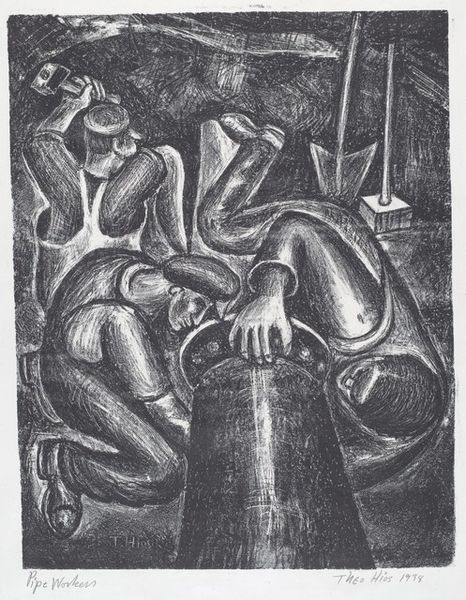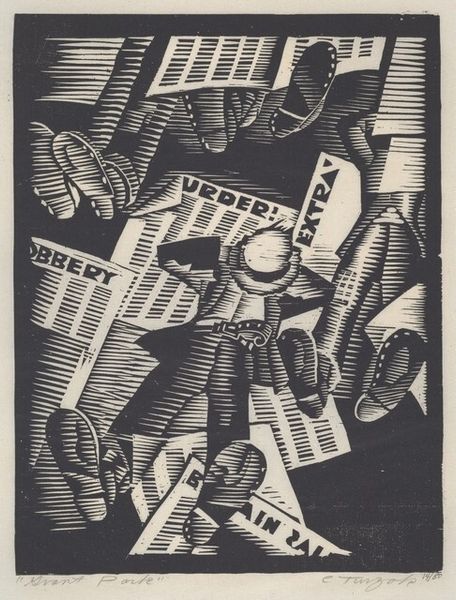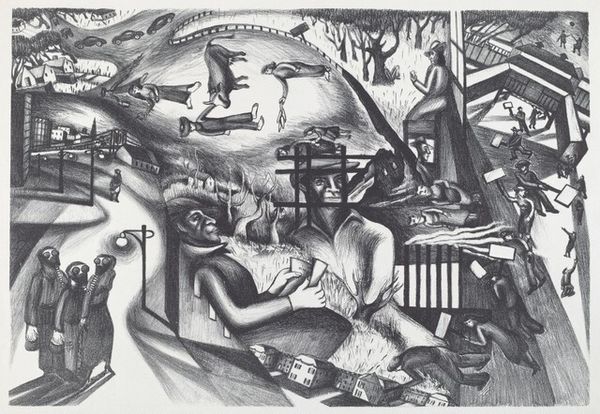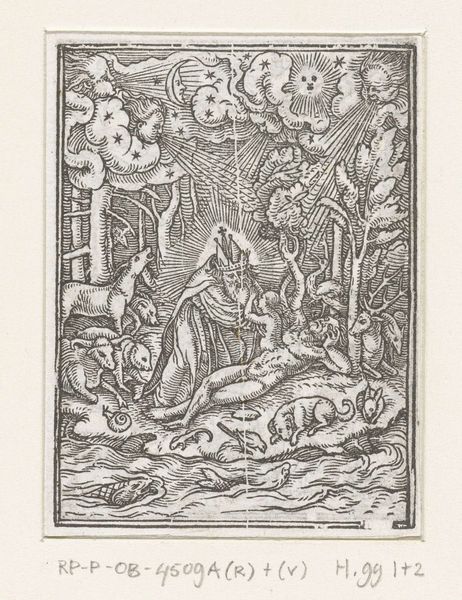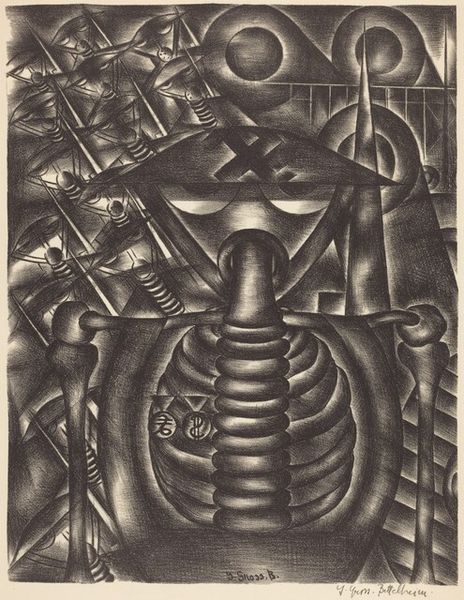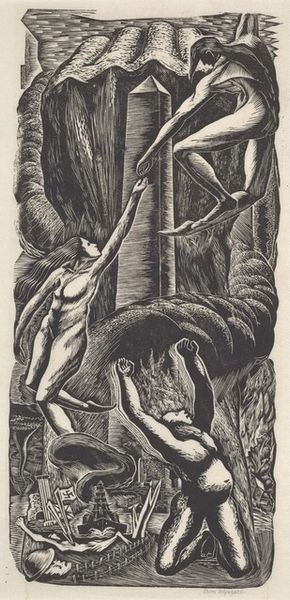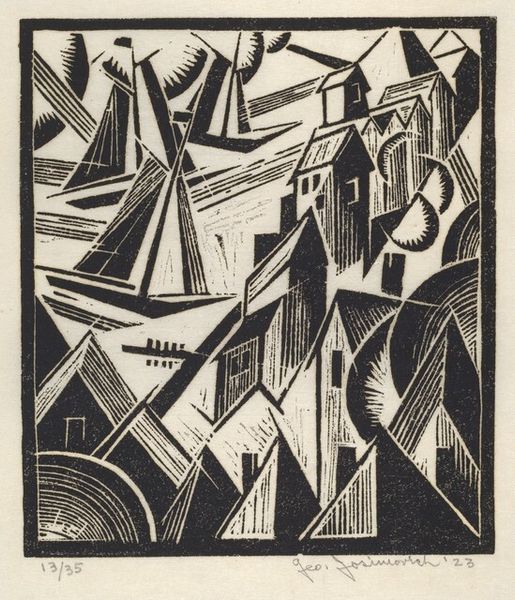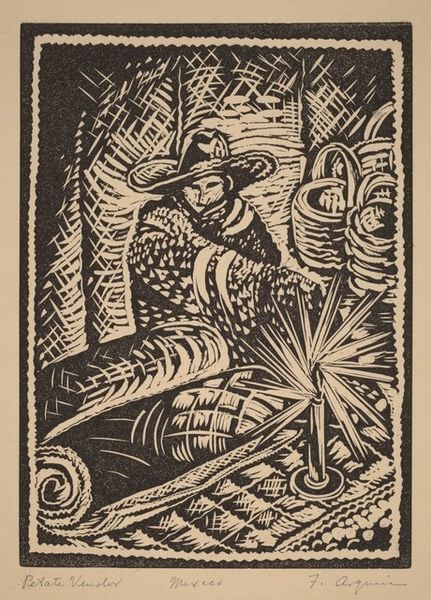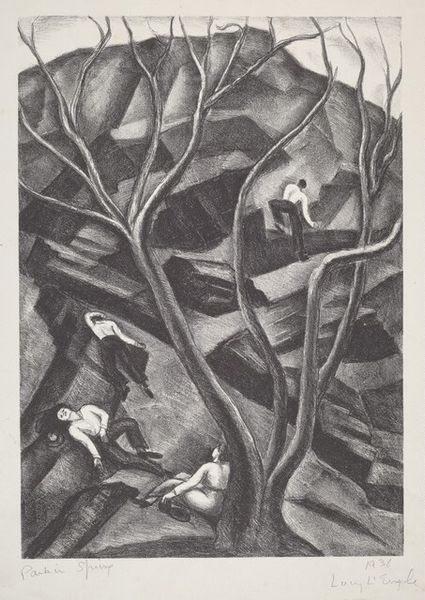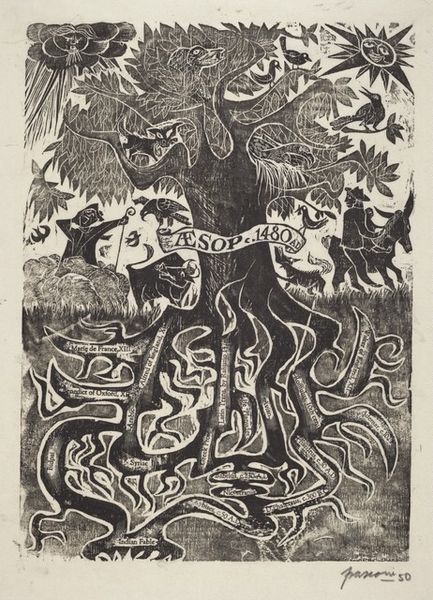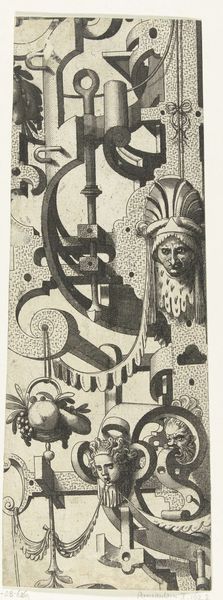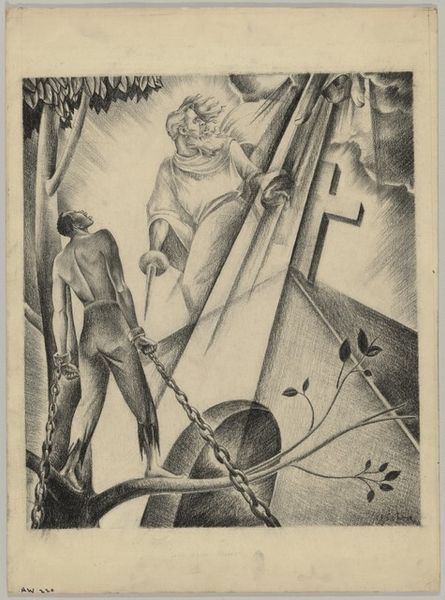
drawing, print, graphite, mural
#
drawing
# print
#
landscape
#
figuration
#
social-realism
#
geometric
#
graphite
#
mural
Dimensions: stone: -- x 343 mm image: 379 x 300 mm sheet: 444 x 352 mm
Copyright: National Gallery of Art: CC0 1.0
Editor: This drawing, titled "Mural," is by Herbert Silberman, made around 1940, likely as a study for a larger work. The use of graphite creates a really stark contrast in this rather complex composition. I'm struck by how different scenes are combined within one image, framed by what seems to be a large tree trunk. What do you see in this piece, with its striking blend of figuration and geometric forms? Curator: From a formalist perspective, consider first the interplay of light and shadow. Silberman utilizes hatching and cross-hatching to model forms and create depth, but note how the light doesn't appear to come from a single source. Each scene possesses its own internal illumination. Does this fragmentation disrupt the overall coherence, or does it create a dynamic tension? Editor: It's interesting that you point that out; it does seem to compartmentalize each narrative. The scenes are visually distinct, yet the tree appears to unify the elements of manual labor and social justice, or perhaps injustice. I wonder if the lack of a unified light source diminishes or enhances this connection. Curator: The central tree itself acts as a structural device. Note how its branches extend into different quadrants, framing each scene like windows into separate realities. The texture of the bark contrasts sharply with the smooth, geometric shapes of the stones being lifted. Where might one read that relationship formally? How does this use of contrast in materiality influence our reading of the mural's content? Editor: So, it’s less about what each scene individually represents, and more about how Silberman constructs meaning through composition and his formal use of the medium itself? I’m seeing it as a study in contrasts – the rough bark against the smooth stones, for example. It reveals a complexity in the interplay between form and content. Curator: Precisely. Form dictates the viewer's journey and shapes perception. By recognizing the aesthetic structure, one might perceive latent significances one didn't perceive earlier.
Comments
No comments
Be the first to comment and join the conversation on the ultimate creative platform.
